Navroz Mubarak! Eid Mubarak! Eid-e Shoma Mobarak!
Sultan Newruz – Imam Hazrat Ali’s Solar Birthday Anniversary! Norouz Nawruz Norooz – New Year Blessings! March 21, 2013
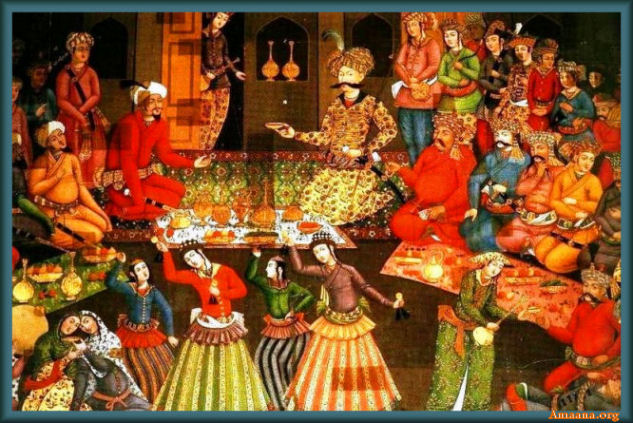 |
| Shah Abbas I receiving Vali Muhammad Khan of Bukhara, Chehel Sotun, Isfahan (c.1657) |
| Cele- bration |
|
| What | A cross-cultural celebration of the New Year, the first day of the Spring astrological Equinox, solar birthday anniversary of our Imam Ali hence the name Nevruz Sultan, in Turkey Nauruz-i Sultani. “It was on Navroz that Adam was created, that God made a covenant with the souls, that Abraham destroyed the pagan idols, that the Prophet of Islam received first revelation, that the Prophet took Ali on his shoulders to smash 360 idols in Mecca, and most important of all, that he declared Ali as his legitimate successor.” – Imam Jafar Sadiq quoted in Bihar al-Anwar |
| Why | Navroz, Nouruz, Nevruz is a compound word meaning new day or new light. Nava is Persian for new. Roz means day. The original meaning of the word, was light, when the sun comes up. Roz is derived from Avestan rowch, and is related to Sanskrit ruci, Latin lux, Armenian luys and, in English light. This global celebration of the first day of the vernal equinox is a tradition that started in ancient times and is carried on to date with vibrant rejoicing for the new year and its promise. In the Ismaili Muslim tradition, this is also a celebration of the soul’s journey to its Creator, enlightened by the Guide, Sultan, a spiritual springtime where renewal is carried out by a spring cleaning in the spiritual and earthly world, the Din and Duniya. |
| When | Navroz falls on the first day of the month of Farvardin, the first month of the Persian calendar which equates to March 21 on the Gregorian calendar. Imam Ali was born on Friday March 21, 600 A.D. on the solar calendar and for Muslims, this is of immense import and most Sufi orders trace their lineage back to Imam Hazrat Ali Ibn Abu Talib (a.s) and that is why the greeting “Sultan Nevruz” is exchanged on this occasion, Sultan – King. |
| Where | Over 50 countries around the world where Persians, Zoroastrians, Ismailis, Turks and Parsis live take part in this major event in any culture influenced by the Persian Empire and its peoples around the world. Recently, President Obama and his Cabinet honored Navroz by issuing a Video and a White House Press Release Governmental greetings to the peoples who celebrate this event globally. The Canadian parliament by unanimous consent, has passed a bill to add Nowruz to the national calendar of Canada, on March 30, 2009. Persian music and New Year traditions have been registered on UNESCO’s List of the Intangible Cultural Heritage of Humanity in September 2009. View more info on links below. |
| History | Navroz is an ancient celebration credited to Prophet Zoroaster and marks the first day of spring and the beginning of the Iranian year. The term Norouz first appeared in Persian records in the second century AD, but it was also an important day during the Achaemenid times (648-330 BC), where kings from different nations under Persian empire used to bring gifts to the emperor (Shahanshah) of Persia on Norouz. This tradition was followed by King Jamshed and has survived over the years. Navroz has been an important event in Ismaili history since it marked the birth of Imam Hazrat Ali. Salman Al-Fars, Farsi (Salman the Persian) was a disciple of the Prophet when Islam was just born. Salman became a Muslim on the day of Navroz and would bring gifts to the Prophet and the Imam and they would celebrate Navroz. Imam Hussain’s wife, Hazrat Sheher Banu was the daughter of the emperor of Iran and the Ahl-e-Bait (people of the house of the Prophet) used to celebrate Navroz with sweets prepared at home. During the time of the Fatimid Caliphs, Navroz was a national holiday. The city of Cairo and Alexandria would be lighted with lamps (chiraag), again the light motif, at the time of Imam Muiz. People celebrated Navroz due to the Farman or order of Imam and on that day they dressed in shiny and bright clothing, denoting light in their hearts, to express their happiness at a new beginning and their spiritual journey. They went boating on the River Nile and had picnics. During the Alamut period in Iran, the Imam gave Didaar and distributed wheat, misry (sugar cubes) and dry fruits (miveh) to the farmers, which is distributed today as Rozi, again light! and the Imam would pray for their good health and worldly and spiritual progress. The 46th Imam Hasan Ali Shah migrated to India from Mahallat, Iran. On the day of Navroz He used to shower titles, gifts and prayers upon the leaders and the Jamat. Today, Navroz is celebrated in the Jamat Khana with special prayers and rejoicing including mehndi application, sherbet – a milk and sugar drink infused with nuts and basil seeds and feasts of safron rice, Biriyani. |
| More Info | Please visit the Present Imam’s birthday celebrations, past Navroz pages, Imam Hazrat Ali pages, and History of the Imams listed on the links below. |

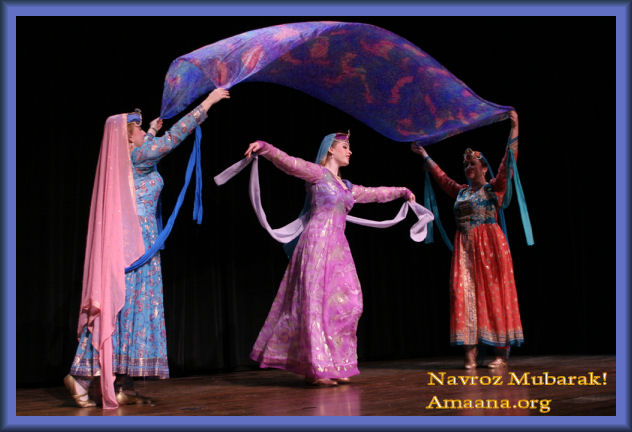
Rejoice! We are all very pleased at the occasion of Navroz, the solar birthday anniversary of Imam Hazrat Ali (as), March 21, 600 A.D. Even though the Islamic calendar is lunar, the solar date anniversary falls on Navroz, the world is celebrating the birthday of this Noble Spirit, the Lion of God, who at the point of the Equinox is the Sun represented by the lion, showering blessings upon the Earth, represented by the bull, with the promise of a New Day when everyone will be spiritually charged! History is replete with all manner of this depiction of the Sun and the Lion epithets for our beloved Imam Hazrat Ali!
Even in our Holy Ginans, reference is made to the marriage of the Female Divine with the Lord of the Throne in many verses. This is the reason we gravitate towards the Guide to make this Spiritual Marriage. This Navroz is full of celestial and spiritual possibilities as the earth becomes a different earth, when the axis shifts and Matter is married to Spirit — when the prophecies in the Scriptures become fulfilled, which the faith of our forefathers have predicted and indicated, to hurry to become ethical in order to get ready for this Spiritual Union.
Sahebe Farman Lakhi Mokaliya
Eji Pir Hasan Kabirdin bolyaa venati
sunno maaraa nar hari re ya Ali
chadde tun tribhovar shaam
paranne shaah vishav kunvaari ya Ali 7
The Mighty Lord will wed the Virgin, our Soul being the Divine Feminine – this marriage to me is symbolic of the Spiritual union with the material. In other words, like Simurgh of Mantiq al-Tayr, the Conference of the Birds by Farid ud-din Attar, we will all become enlightened! Inshallah!
Here is what Mowlana Hazar Imam said in his speech October 23, 1980, about the Simurgh translated thirty birds or chief bird:
Let me close, therefore, by reminding you of Attar’s great poem, the Conference of the Birds, Mantiq al-Tayr.
The birds, you will recall, in huge quantities went in search of the Simurgh, the ideal and perfect king. After many tribulations, thirty of them do reach the end of the journey and come to the gate of the Supreme Majesty. The chamberlain tests them and then opens the door and they sit on the masnad, the seat of the Majesty and Glory. And, as an inner glow came into them, they realised that it is they together who were the Simurgh and that the Simurgh was the thirty birds.
Not only is this the first day of spring, when the earth revives itself and moves to a new cycle of rebirth in the northern hemisphere but it is when the astrological new year starts with the passage from Pisces – Huth (two goldfish), the birth sign of Jesus, to Aries – Haml (ram), the first sign of the zodiac. The sun completes its sojourn across the 12 constellations, and re-enters the first house of Aries. See more quotes below.
“Factually the number of months in the eyes of God, in the Book of God from the day He created the earth and the heaven, are twelve.” The Quran – 9:36
Here are the events that took place on this amazing day as enumerated by Imam Jafar as Sadiq, Hazrat Ali’s great grandson, in the summary above, source – Muhammad Bakir Majlisi in his Bihar al-Anwar:
![]() God made a covenant with the souls before creation
God made a covenant with the souls before creation
![]() Nowruz marks the first day when the universe started its motion
Nowruz marks the first day when the universe started its motion
![]() Adam was created
Adam was created
![]() Prophet Abraham destroyed the pagan idols that were being worshipped by his father and others
Prophet Abraham destroyed the pagan idols that were being worshipped by his father and others
![]() The Quran was revealed to Prophet Muhammad (s.a.s.), the night of Layla tul Qadr – Night of Power
The Quran was revealed to Prophet Muhammad (s.a.s.), the night of Layla tul Qadr – Night of Power
![]() Prophet Muhammad took Hazrat Ali on his shoulders to smash 360 idols in Mecca
Prophet Muhammad took Hazrat Ali on his shoulders to smash 360 idols in Mecca
![]() Prophet Muhammad declared Ali as his legitimate successor at Gadhir-e Khumm
Prophet Muhammad declared Ali as his legitimate successor at Gadhir-e Khumm
![]() Hazrat Ali was born on Navroz (on the solar calendar, the lunar Muslim calendar had not yet been established until the Hijra, the migration of Prophet Muhammad from Makkah to Medina) in the Kaaba that was built by Prophet Abraham and Prophet Ismael (Ibrahim and Ismail)
Hazrat Ali was born on Navroz (on the solar calendar, the lunar Muslim calendar had not yet been established until the Hijra, the migration of Prophet Muhammad from Makkah to Medina) in the Kaaba that was built by Prophet Abraham and Prophet Ismael (Ibrahim and Ismail)
![]() Hazrat Salman Farsi, Al-Fars (Salman the Persian) converted to Islam on Navroz and used to prepare special sufro (offering of food and sweets) on the day of Navroz for Prophet Muhammad and Hazrat Ali.
Hazrat Salman Farsi, Al-Fars (Salman the Persian) converted to Islam on Navroz and used to prepare special sufro (offering of food and sweets) on the day of Navroz for Prophet Muhammad and Hazrat Ali.
“O you who believe! When you consult the Apostle, then offer something in offering (mehmani, sufro) before your consultation; that is better for you and purer; but if you do not find (the means), then surely Allah is Forgiving, Merciful” – Quran 58.12
The term Norouz first appeared in Persian records in the second century AD, but it was also an important day during the Achaemenid times (555-330 BC), where kings from different nations under Persian empire used to bring gifts to the emperor (Shahanshah) of Persia on Norouz. For Muslims, this tradition has continued for over 1400 years since the time of Hazrat Ali (a.s. on whom be peace) the first Imam appointed by Prophet Muhammad (s.a.s. – peace be upon him). Not only was March 21st Hazrat Ali’s birthday, but the famous event at Ghadir-e Khumm took place on March 21st at the investiture of Ali to carry on the covenant as ordered by God in the famous verses revealed that day to the Prophet.
The Iranian scholar Abu Rayhan Biruni of the 10th century A.D., in his Persian work “Kitab al Tafhim” provides a description of the calendar of various nations. Besides the Persian calendar, various festivals of Arabs, Jews, Sabeans, Greeks and other nations are mentioned in this book. In the section on the Persian calendar, he mentions Nowruz, Sedeh, Tiregan, Mehregan, the six Gahanbar, Parvardegaan, Bahmanja, Isfandarmazh and several other festivals. According to him: It is the belief of the Persians that Nowruz marks the first day when the universe started its motion.
Nowruz, however, was most honored even by the early founders of Islam. There are records of the Four Great Caliphs presiding over Nowruz celebrations, and it was adopted as the main royal holiday during the Abbasid period. Following the demise of the Caliphate and the subsequent re-emergence of Persian dynasties such as the Samanids and Buyids, Nowruz was elevated to an even more important event. The Buyids revived the ancient traditions of Sassanian times and restored many smaller celebrations that had been eliminated by the Caliphate. Even the Turkish and Mongol invaders did not attempt to abolish Nowruz in favor of any other celebration. Thus, Nowruz remained as the main celebration in the Persian lands by both the officials and the people.
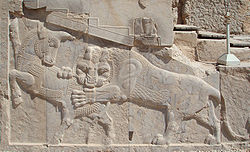
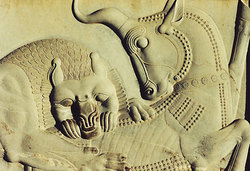
Bas-relief in Persepolis. A Zoroastrian symbol of Nowruz – on the vernal equinox the powers of the eternally fighting bull (personifying the Earth) and lion (personifying the Sun) are equal.
The March equinox takes place each year at a specific moment in time, when the tilt of the Earth’s axis is inclined neither away from nor towards the Sun, the center of the Sun being in the same plane as the Earth’s equator. This synchronization has an esoteric interpretation in the Ismaili tradition as the Sun – the Imam, can light the believer’s (Momin’s) soul for the journey to eternity. We are on this plane on a mission to serve the Lord and the external practices like the offerings (Sufro), of sweets, sprouts and brilliant items are so that the light would enter our hearts and illumine our souls by the Grace of the Lord. It is a celebration of renewal and change, a time to honor family and community relations in order to get serious in serving humanity thereby serving our Lord!
Our beloved Imam says: “On this day of Navroz, I say to each and every one of you Eid Mubarak, and I pray that in this New Year, your worldly and your spiritual happiness should progress tenfold and that this be the case every year.”
is the sovereign of time, for God has raised up the body through the soul.When the auspicious Jupiter saw his face, it became the source of munificence, the mine of good fortune.As long as the clouds of Navroz wash all quarters of the garden with showers of lustrous pearls;and the nightingale laments the rose at the break of dawn, like a grieving soul separated from its lover:may the authority of the sovereign of time prevail over space and time and the denizens of the world!- by Nasir Khusraw |
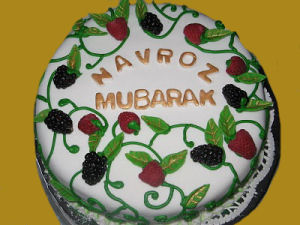
|

Prince Amir Tamim al-Fatimi was the eldest son of Imam al-Muiz. He was born in 948 CE in Mahdiyya, the first Fatimid capital in North Africa. He was amongst those who accompanied Imam al-Mu’izz on the historic journey to Egypt when the seat of the Fatimid government was transferred to Cairo. He was then twenty five years old. The Prince dedicated himself to literary and cultural pursuits until his premature death at the age of thirty six. In this poem, Prince Tamim shows his immense affection for the Imam and says that the New Year Festival of Nawruz is a blessing from the Imam.
“When I compose a poem in praise of you,
I feel inspired and my speech becomes refined.
But if I wish to praise someone other than you,
I’m tongue-tied and my speech disproves the lie.
Because you are born for grace and eminence,
and such gifts are indeed innate in your nature
Your honour is the dawn, your face a bright star,
and your right hand pours rain upon the creation.
You are the light from which we seek illumination,
the gracious beloved for whom ransom is given.
Through you, our days of tyranny turn to order,
and the indomitable, treacherous time is humbled.
If Nawruz is a festival of joy and delight,
it is through your light that it has come to be so.
So live long! Bring glory and prosperity to the times,
If they do not prosper by you, may they be ruined!
O son of the Prophet, God’s blessings be on you!
you are a time-tested sword to fight life’s sorrows.”
Source: Shimmering Light: An Anthology of Ismaili Poems

From Iran, our Pirs traveled to India and many of the people converted to Islam. The Pirs learned the local geets and composed Ginans which has become an amazing body of knowledge for the Ismailies from the Indian sub-continent. In the Ginans they incorporated Navroz into the folklore and it was called Vasantji, Vasant or Basant, a symbolic name for the Imam on Navroz who would bring renewal of crop and spirit. A search of the Ginans on Ismaili.net will reveal this treasury that needs to be explored further! In the meantime, here is a Ginan by Sayyed Fateh Ali Shah during the time of Imam Khalilullah.
Ginan – Navroz Na Deen Sohamana: http://youtu.be/7FyAXXnT5YU
ejee navaroj naa din sohaamannaa
sree hari kaayaam shikaar ramavaa gayaa
sevak naa man thayaa udaasi, paraan hari charanne raheaa…..1
On the lovely day of the New Year, the noble ever-living Lord went to the forest to hunt. The heart of his servant was saddened, but his soul remained at His feet.
ejee sree kaayam prite jo chit baa(n)dhi
nar ne prite ame van gayaa
evaa van sohaamannaa shree saaheb ditthaa,
delaa dai devataa raheaa……………………………….2
With my mind fixed upon my love for the Lord of the Resurrection, I went to the forest in my love for the Lord. In the lovely forest I beheld the Lord, who ever divinely bestows audience.
ejee bhalu(n) thayu(n) saahebe sumat aali
shree hari kaayam saathe ramavaa ame van gayaa
anat aashaa puri hamaari, dev dil bhaave gameaa…………..3
How good it was to recieve my Lord’s good counsel. I went to the forest to wander with the Lord of the Resurrection. My hopes untold were all fulfilled, and the Lord delighted my heart.
ejee hete hari su(n) hirakh baa(n)dho
avichal ra(n)g saaheb se giraheaa
evi chi(n)t baa(n)dhi nar kaayam saathe
sat bha(n)ddaar motie bhareaa…………………………..4
In love I was attached to the Lord in rapture, and I gained enduring delight from the Master. With my mind thus fixed on the ever-living Lord, the treasury of truth was filled with pearls.
ejee ame saaheb saathe sael kidhaa
ridh sidhaj paameaa
ekaman ginaan je saa(m)bhale, aa jiv tenaa udhareaa……….5
I journeyed with the Lord, and gained real prosperity and success. The souls of those who listen to the teaching with full attention are saved.
ejee jeev jaare jugat paame
paraann pope ram raheaa
agar cha(n)dan parem raseaa, hete ha(n)s sarovar jhileaa…..6
When the soul finds the Way, life blooms like a flower. Mingled with adoration, it becomes fragrant as aloe or sandal. With love the swan swims on the lake.
ejee gaddh chakavaane kile shaahaa khalilaa rame
tiaa(n) phate ali ne mayaa karine bolaaveaa
anat aashaa puri hamaari, nit hari nure utthaa……………7
When Shah Khalilullah went to inspect the fortress, he graciously summoned Fateh Ali there. My hopes untold were fulfilled, and the Lord appeared in light for ever.
ejee bhaai re moman tame bhaave aaraadho
bhanne shamasi tame saa(m)bhalo rukhi
saaheb naa gunn nahinn visaare,
tenaa paraan nahi(n) thaashe dukhi………………………8
O brother believer, worship him with feeling. The follower of Pir Shams says: listen, O believer. Those who do not forget the virtues of the Master will not be grieved in heart.
Source: Zawahir Moir’s Ismaili Hymns – Ismaili.net

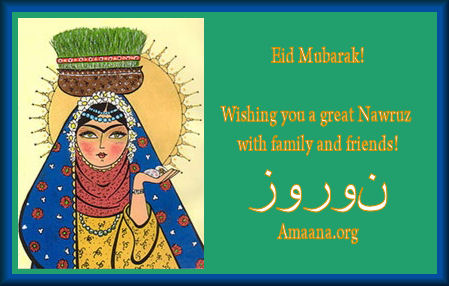 Navroz Celebrated from the beginning of Time!
Navroz Celebrated from the beginning of Time!
“Morale and enthusiasm were kept up by the observance of various festivals of general Islamic nature; particularly those of Shia and Ismaili. Fridays and the two Idd days were the days of festivity. Moreover, the Shia festival of Idd-e-Ghadeer al-Khumm and the 10th of Muharram were also observed.
Birthdays of the Ahl-e-Bayt (the Prophet’s family) and the Imams and certain important dates of the year were celebrated. Imam took part in the celebrations of the festivals. Local festivals of secular origin, like the “Flooding of the Nile” and “Navroz” (beginning of spring) were also encouraged by the Imam. Imam al-Muiz would hold huge receptions at his palace; processions were taken through the town and the whole town was illuminated”. – History of the Imams
In his work titled the Nowruznama, Omar Khayyam, a well known Persian poet and Mathematician provides a vivid description of the celebration in the courts of the Kings of Persia: [Umar ibn Ibrahim Khayyam; bih kushish-i Ali Husuri.]
From the era of Khosrow till the days of Yazdegard, last of the pre-Islamic kings of Persia, the royal custom was thus: on the first day of the New Year, NowRuz, the King’s first visitor was the High Mobad of the Zoroastrians, who brought with him as gifts a golden goblet full of wine, a ring, some gold coins, a fistful of green sprigs of wheat, a sword, and a bow. In the language of Persia he would then glorify God and praise the monarch. This was the address of the High Mobad to the king: “O Majesty, on this feast of the Equinox, first day of the first month of the year, seeing that thou hast freely chosen God and the Faith of the Ancient ones; may Surush, the Angel-messenger, grant thee wisdom and insight and sagacity in thy affairs. Live long in praise, be happy and fortunate upon thy golden throne, drink immortality from the Cup of Jamshid; and keep in solemn trust the customs of our ancestors, their noble aspirations, fair gestures and the exercise of justice and righteousness. May thy soul flourish; may thy youth be as the new-grown grain; may thy horse be puissant, victorious; thy sword bright and deadly against foes; thy hawk swift against its prey; thy every act straight as the arrow’s shaft. Go forth from thy rich throne, conquer new lands. Honor the craftsman and the sage in equal degree; disdain the acquisition of wealth. May thy house prosper and thy life be long!”
Haft Sīn
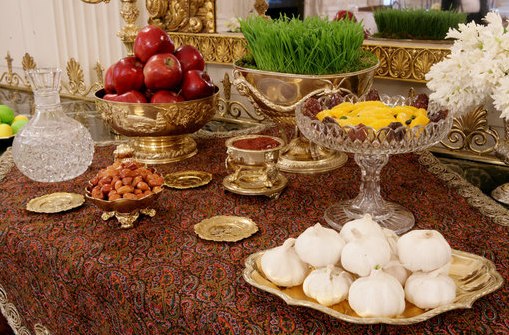 Haft Sîn (Persian: هفت سین) or the seven ‘S’s is a major traditional table setting of Nowruz, the traditional Iranian spring celebration. The haft sin table includes seven items starting with the letter ‘S’ or Sīn (س) in the Persian alphabet.
Haft Sîn (Persian: هفت سین) or the seven ‘S’s is a major traditional table setting of Nowruz, the traditional Iranian spring celebration. The haft sin table includes seven items starting with the letter ‘S’ or Sīn (س) in the Persian alphabet.
The custom and the traditional practice of Haft Sin has been changed over the past millenium. The term was initially referred to as Haft Chin. The word Haft Chin is derived from the word Chin (چین) meaning “to place” and Haft (هفت), the number 7. The items originally represented seven of the Zoroastrian yazatas or divinities including atar and asman. The invasion of Sassanid Persia by the Umayyad Caliphate in 650 brought acculturation and cultural transformation to the local Persians. This subsequently forced the local population to adapt and replace many Zoroastrian customs and words with Arabic and Islamic concepts. The Arabic language was heavily enforced upon the conquered from the local Berbers in North Africa and the Copts in Egypt to the Aramaic Christians in Syria and Iraq, and later the Persians and other Iranian speaking populations throughout Iran and the surrounding areas. The Arab conquests dramatically changed the Middle East and North Africa in respect to language, culture, and religion. The digraph Ch (چ) is not present in the Arabic language leading to its replacement by the letter S (س) in the word Sin. The Arabic assimilation of the Persians and other Iranian groups continued under the Abbasid Empire until the revival of the Persian language and culture by the Samanid Empire in 819 although the term and custom of Haft Chin had evolved into Haft Sin after nearly two centuries of Arab rule.
The “Haft Chin” items are:
Mirror – symbolizing Sky
Apple – symbolizing Earth
Candles – symbolizing Fire
Golab – rose water symbolizing Water
Sabzeh – wheat, or barley sprouts symbolizing Plants
Goldfish – symbolizing Animals
Painted Eggs – symbolizing Humans and Fertility
Haft-Sin
The Haft Sin items are:
sabzeh – wheat, barley or lentil sprouts growing in a dish – symbolizing rebirth
samanu – a sweet pudding made from wheat germ – symbolizing affluence
senjed – the dried fruit of the oleaster tree – symbolizing love
sir – garlic – symbolizing medicine
sib – apples – symbolizing beauty and health
somaq – sumac berries – symbolizing (the color of) sunrise
serkeh – vinegar – symbolizing age and patience.
Other items on the table may include:
Sonbol – Hyacinth (plant)
Sekkeh – Coins – representative of wealth
traditional Iranian pastries such as baghlava, toot, naan-nokhodchi
Aajeel – dried nuts, berries and raisins
lit candles (enlightenment and happiness)
a mirror (symbolizing cleanness and honesty)
decorated eggs, sometimes one for each member of the family (fertility)
a bowl of water with goldfish (life within life, and the sign of Pisces which the sun is leaving). As an essential object of the Nowruz table, this goldfish is also “very ancient and meaningful” and with Zoroastrian connection.
rosewater, believed to have magical cleansing powers
the national colours, for a patriotic touch
a holy book (e.g., the Avesta, Qur’an,or Kitáb-i-Aqdas) and/or a poetry book (almost always either the Shahnameh or the Divan of Hafiz)
Source for Haft Sin section – Wikipedia

“The essence (batin) of Ismailism remains unchanged but the external aspect (zahir) changes. The Nizari Ismailies believe that the first man who existed on earth was an Imam and the last will also be an Imam…These two are in essence the same, the archetype of the Spirit that pervades the whole of Creation. As Imam Ali is reported to have stated in the Sermon of the Great Declaration (khutbat al-bayan): “I am the First and the Last.” All Imams are thus understood in Ismaili doctrine to be one of the same essence transmitting the Sophia Perennis (Eternal Wisdom) to the seekers of enlightenment from generation to generation until the end of time.”
– Diana Steigerwald, (The Multiple Facets of Ismailism, Sacred Web, Volume 9, pp. 87, July 2002)
“It is the Imam who is the Embodied Light, Rope of God, Speaking Book, Straight Path, Tree of Knowledge (Holy Tree), Kawthar, Progeny of Ibrahim (Progeny of Muhammad), Rasikhun fi’l-ilm (those who are well-grounded in knowledge), Imam-i Mubin (Manifest Imam), Shahid (Witness), Mu’awwil-i Qur’an (the one who gives the ta’wil of the Qur’an), Guide, Heir of the Prophet, Gate of knowledge and wisdom, Supreme Name, Light of ‘Ali, Waliyy-i amr (Custodian of Command), Firm Handle, Shah-i Wilayat (King of Wilayat), Subtle World, Ibda’i Body, Hidden Book, Perfect Man, Embodied Paradise, Means of Salvation, Nuh’s Ark, Soul of the World, Single Soul, Last Day, Face of Allah, Mountain of Qaf, Honoured Rock, Sound Heart, Sun of Azal (Pre-eternity), Ladder of Heaven, Sur (Trumpet) of love and annihilation, Lamp of Recognition, Treasure of Secrets, etc.” [Source: Rubies & Pearls] (Page 21)
Navroz by Mumtaz Ali Tajddin – Encyclopaedia of Ismailism
In 3266 B.C. reigned the first king of Iran, called Kumers. He determined the days and the seasons in a year and he also determined the first day of the sun in the celestial station (haml)[Aries]. The dates and the years came to be accounted since then, and he ordered all learned people to pronounce and to proclaim the importance of that day. About hundred years after Kumers, Jamshed became the king of Iran, and he called this day Navroz. He celebrated his coronation on this day, and observed the day as a festival of Eid.
Muhammad Bakir Majlisi quotes a number of traditions from the Imam in the 14th volume of his Bihar al-Anwar, who reports a tradition related by Moalla bin Khunais that Imam Jafar Sadik said: “It was on Navroz that Adam was created, that God made a covenant with the souls, that Abraham destroyed the pagan idols, that the Prophet of Islam received first revelation, that the Prophet took Ali on his shoulders to smash 360 idols in Mecca, and most important of all, that he declared Ali as his legitimate successor.”
Navroz was marked in Damascus by exchange of gifts during the period of the Umayyads. Yaqubi (2:366) writes that caliph Umar II abolished the Navroz and Mihrjan gifts through a royal decree he issued. Later, caliph Yazid II re-introduced in the state.
The Abbasid caliphs used also to give importance to this day. Caliph Mansur declared this day as Eid and greetings were exchanged in the court to celebrate Eid-e-Navroz. The people during the Abbasid period rose early in the morning and went to the wells or streams, drew water in a vase and poured it over themselves. Tabari (3:2163) writes that they also sprinkled water on each other. In the time of caliph Mutawakkil, Navroz was celebrated with great pomp and rejoicing. He is said to have struck five million dhirams, painted in various colours and showered them upon his officials. Masked actors (ashab al-samaja) appeared before the caliph, who showered coins upon them and distributed roses fashioned from red amber. Ibn Zubayr reports that at one Navroz, the play of samaja was arranged for the caliph Mutadid, which cost 13,000 dinars. A variety of sweet dishes, such as sabuniyya and lawzinaj were cooked, and the people then distributed them to one another. Under caliph Mutawakkil, according to Tabari (3:1448), the poet Buhturi says: ‘the Navroz day has again become the same as was instituted by Ardasher.’ Not unlike the Persian kings, the Abbasid caliphs used to appear in their chambers, clad in gorgeous attire, in order to receive the present personally.” It was also marked by an exchange of gifts. Tanakhi (d. 384/994) writes in his Nishwar al-Muhadara (8:145) that caliph Mutawakkil used to sit in his chamber from morning to the evening, accepting the gifts offered to him by the high officials and other dignitaries.
In Baghdad, the common people, on this festive occasion, illuminated their houses with cotton pods (habb al-qutn) and clay censers (al-majamir al-tin), vide Nishwar al-Muhadara (1:143). The royal houses, at the same time, would be illuminated with pods of costly materials, such as zahri cloth (the light cloths) soaked in oil of balsam (dahn al-balsan), and other fragrant and expensive oils were burned in censers of stone (al-majamir al-biram).
During the six days of Navroz festival, the people in Baghdad gathered in the streets and lit fires. Tabari (3:2163) writes that in 284/897, caliph Mutadid tried to prevent the unrestrained rejoicing in the streets during the summer weather, but after two days he was obliged to let public resume their customary practice. Ibn Hawkal (d. 367/ ) writes that in the 10th century in Jibal, the people celebrated Navroz festival for seven consecutive days with much enthusiasm and gaiety. They cooked a number of delicious dishes and donned elaborate costumes and spent a lot of money on the festivities. They also indulged in various sports, organized singing parties, and feasted even on the roofs of their buildings. Prof, Tritton quotes a passage in Sketches of Life under the Caliphs (MW, LXII, 1972, p. 145) from an unpublished text of Hilal al-Sabi’s Kitab al-Hafawat about the Navroz during the Abbasid period at Baghdad. Sabit notes that the people in Baghdad hired a special cook to work during the night to have the dishes fresh in the morning, and gave parties for relatives and friends, at which they served green melons, plums, peaches and dates. Women made a point of buying perfumes for the day, and tortoises were brought in to drive devils from the house. Eggs were dyed in various colours. To sprinkle perfume on a man and tread seven times on him was a means of driving away the evil eye, laziness and fever. Antimony or rue was used to improve the sight during the coming year; it was a good day for taking medicine. Respectable people hit each other with water-skins or threw water about in their houses or gardens, while common folk did this in the streets. Makrizi writes in his Khitat that the Abbasid caliph Mutawwakil struck five million dhirams painted in various colours, red, yellow and black, for showering upon his officials. Masked actors, too, appeared before the ruler who flung coins at them.
Navroz was celebrated also in Syria and Egypt under the Fatimids, vide Makrizi’s al-Khitat (4:241-2). Its celebration in Cairo appears to have been well established at the time of the Fatimid conquest of Egypt. On that occasion, the Imam rode to the Azhar mosque under a golden parasol (mizalla mudhahhaba), carrying the staff (qadib), wearing a white turban and a cowl (taylasan), and girded with a sword. He was accompanied by five thousand men in a procession. The Imam also presented costumes with siglaton robes. A grand banquet was then followed. The chief steward (sahib al-ma’ida) and his servants carried trays from the palace, containing one hundred collections of wide bowls covered by silk round pieces, on top of which were mats scented with a light musk (misk fatih). When the banquet was over, each person took what was left over “for honour and blessing” (al-sharaf wal-baraka). Prince Tamim (337-374/948-984), the eldest son of Imam al-Muizz was one of the renowned poets. In his Diwan (ed. M.M. al-A’zami, Cairo, 1957), he eulogizes the Imam that [see full poem above]:
If Navroz is a festival of joy and delight,
it is through your light that it has come to be so.
In Egypt, the festival of Navroz was celebrated with great pomp. It must be known that Egypt under the Fatimid remained largely a Sunni country and Ismailism won only a limited following among the population. Cairo alone housed a large Sunni population. When Imam al-Muizz found that the general Muslims took less interest publicly in the festival, he prohibited public festivities on Navroz in 363/974. Thus, the celebration first moved to the streets of Cairo, to the Azhar, and, finally, to the palace itself. These changes show in part how a popular celebration moved progressively close to the Ismaili centre of Cairo and ultimately was assimilated into the ceremonial of the court. The general population probably did not desist from its customary practices on the festival, but the ceremony that took place at court was stripped of all popular elements.
The Ottoman Turks had adopted it for the feast which ended the fast, which was called the Feast of Sugar (sheker-bairami). It was originally held at the summer solstice, on the 21st June, but gradually, in consequence of the difficulty of correcting the calendar, it was shifted towards the spring equinox, and the reform of Jalaluddin Malik Shah fixed it on the 21st March, the date which the Nauruz-i Sultani has kept to the present.
The Navroz was also celebrated in India during the period of the Mughal empire. On the occasion of Navroz, the most picturesque ceremony in the court was the weighing of emperor Akbar against seven kinds of grain, coral and gold. Emperor Akbar and Jhangir festiviated with great pomp, but Aurengzeb had abolished it. He substituted for Navroz another imperial feast, which was to begin in the month of Ramazan and to continue upto the Eid al-Fitr. This was called as Nishat Afroz Jashan. But the later Mughal emperors revived the Navroz festival, which was celebrated for nine days. On the first day, the emperor gave away a gold chain of an elephant in alms and sit on the weighing scale. In the court, he occupied the peacock throne, and pearls and rubies were scattered among those present. Outside the court, the procession of the elephants and horses passed before the emperor. The nobles presented gifts. On one occasion, Shams ad-Dawla Khan-i Dauran Mansur Jang, offered the emperor Muhammad Shah, one lac of rupees and a garland of pearls worth of twenty-five thousand of rupees each. The emperor on his part honored them with the khilats. Next day, the emperor again took his seat on the throne and the nobles again offered presents who missed on the first day. On the third day again the emperor took his seat on the throne and witnessed dance and music party. Thus, during these nine days all sorts of recreative festivities were organized and gifts were exchanged.
Navroz is seen to be celebrated by a number of Shi’ites and the Sufis. The Bektashi Sufi order in present day in Turkey, for instance, celebrate Navroz (pronounced nevruz in Turkish) not because of the new year it is to herald, but to commemorate the birthday of Imam Ali bin Abu Talib, also in his capacity as the symbolic founder of most Sufi orders throughout Islamic history. Navroz is observed among the Turks of Anatolia at the time of the equinox, on the ninth day of March.
The eight Ismaili Imams flourished in Alamut in Iran for about 171 years. The eighteen Imams then also resided in different villages during post-Alamut period for about 582 years. Iran is the original home of Navroz celebration, and it is most probable that the Iranian Ismailis continued to celebrate Navroz with other Shi’ites. Thence, it appears that the ceremony tooks its root in Syria, Central Asia and India.”
- Source of above – Navroz by Mumtaz Ali Tajddin – Encyclopaedia of Ismailism
∞
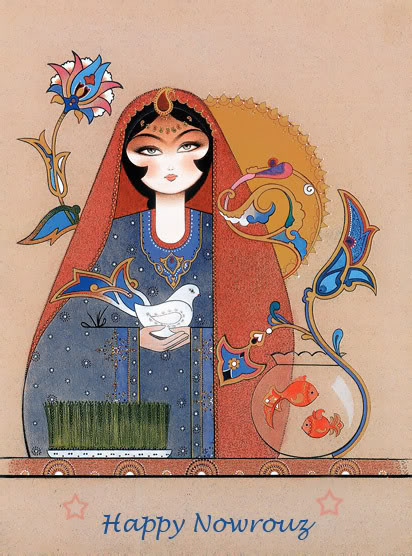 Persian music and New Year traditions have been registered on UNESCO’s List of the Intangible Cultural Heritage of Humanity.
Persian music and New Year traditions have been registered on UNESCO’s List of the Intangible Cultural Heritage of Humanity.
Tradition of Persian New Year, Norouz, Nowruz, Navroz and the Radif of Iranian music were inscribed on the list during the 4th session of the Intergovernmental Committee for the Safeguarding of the Intangible Cultural Heritage held from Sep. 28 to Oct. 2, 2009 in Abu Dhabi.
Navroz is celebrated in many countries around the globe where the people have settled including Iran, Afghanistan, parts of the Middle East, as well as in the former Soviet republics of Tajikistan, Uzbekistan, Azerbaijan, Turkmenistan, Kazakhstan, Kyrgyzstan, Albania, China, and Turkey and is a public holiday in many countries like Iran, Tajikistan, Afghanistan, Azerbaijan, Turkmenistan, Uzbekistan, Kashmir, and Kyrgyzstan and all the western countries where it is part of the local culture.
Also spelled Nouruz, Norouz, Norooz, Narooz, Nawru, Nauruz, Nawroz, Noruz, Nohrooz, Novruz, Nauroz, Navroz, Naw-Rúz, Nowroj, Navroj, Nevruz, Newroz, Navruz, Navrez, Nooruz, Nauryz, Nevruz, Nowrouz, Наврӯз, ნავრუზი (Georgian), नवरेह (Kashmiri), નવરોઝ (Parsi Gujarati)
Use these Navroz cards to send to your family and friends. The pictures show some of the ways in which this age old holiday has been celebrated and it is kept alive as it gives hope of renewal and change for everyone in both the material and spiritual world of the participants.
Related Pages Navroz Pages
- Nowruz, Navroz Mubarak! Navroz Page 2015
Nawruz Festival
Navroz Page from 2012
Navroz Page from 2008
Navroz Page from 1997
74th Birthday Page – 2010
53rd Imamat Day Page – 2010
Prophet Muhammad Pages
Hazrat Ali Pages
Ismaili History1
Ismaili History 2
Navroz Other Links
Navroz by Mumtaz Ali Tajddin – Encyclopaedia of Ismailism An excellent article on Navroz, a must read!
Navroz na Din Sohamna Ginan Interpretation by Sadrudin K. Hassam in Ilm Magazine featured at Simerg
Navroz Greetings by Salman Spiritual
Videotaped remarks by President Obama in celebration of Nowruz Also see Press Release by the White House
Canada’s Conservatives Send Navroz Video Greetings 2009
History of Novruz by Iran TV, pleasant to watch!
Nawruz From Wikipedia
Spring Equinox in March From Wikipedia
Nevruz Celebrations in Turkey and Central Asia
Navruz Celebrations in Dushanbe
Birthday Greetings to His Highness The Aga Khan from Prime Minister of Canada The Rt. Hon. Stephen Harper Download pdf file
Canadian Prime Minister Stephen Harper pays respects to His Highness Prince Karim Aga Khan
Video – Canadian Minister Kenney extends birthday wishes to His Highness Prince Karim Aga Khan
Golden Jubilee Tribute View some of Mowlana Hazar Imam’s achievements, amazing!
Index of Speeches made by Mowlana Hazar Imam at the Ismaili Web Amaana.org
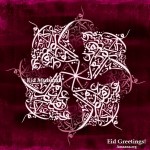
Pingback: The Nawruz Festival | Ismaili Web Amaana | Ismailimail
Pingback: Layla tul Qadr – The Night of Power and Destiny | Ismaili Web Amaana
Pingback: Imam Hazrat Ali | Ismaili Web Amaana | Ismaili Web Amaana
Pingback: Nawruz: Ismaili Web Amaana | Ismailimail